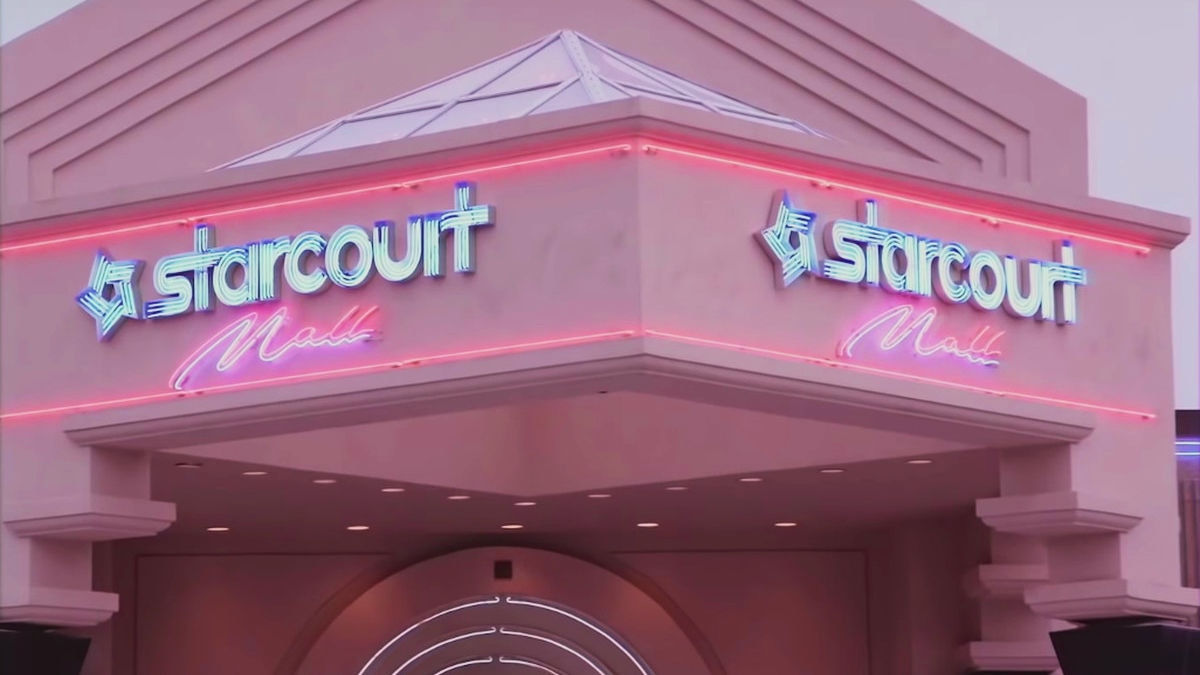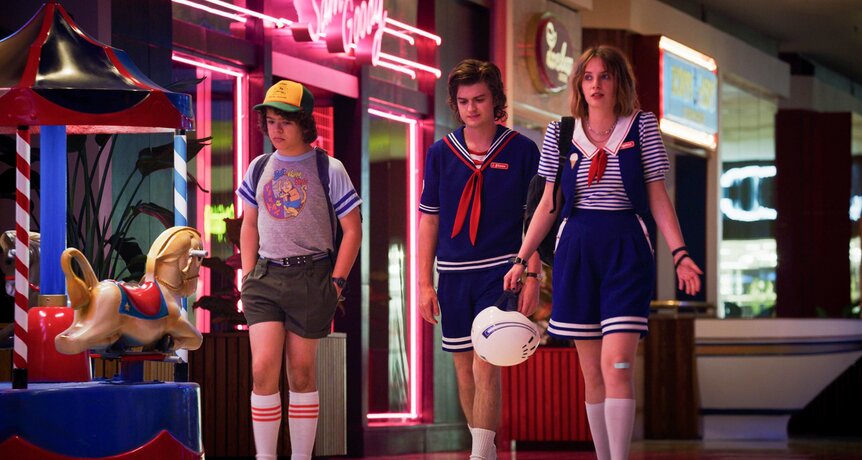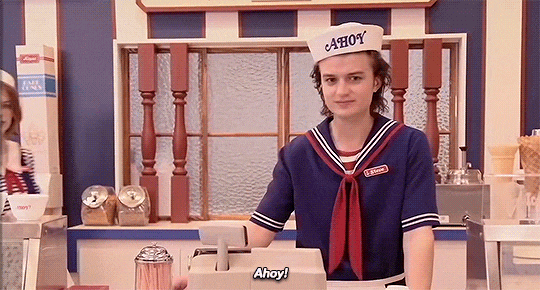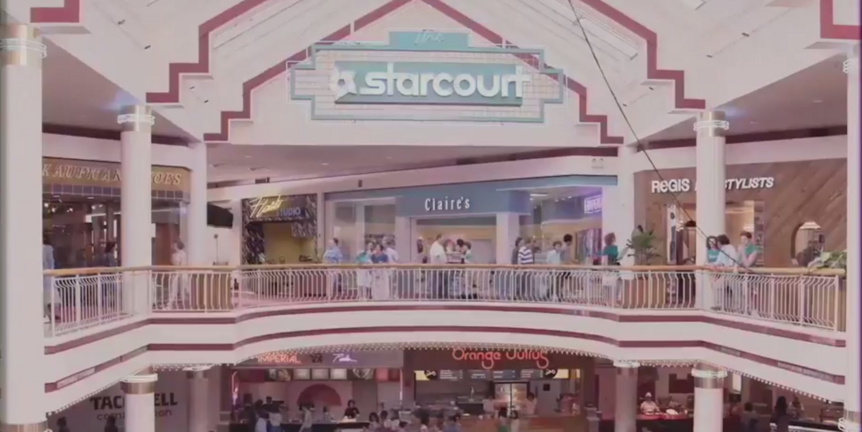Create a free profile to get unlimited access to exclusive videos, sweepstakes, and more!
A mall historian assesses Stranger Things 3's true star: The Starcourt Mall

Eleven, Hopper, and the rest of the main characters of Stranger Things are worried about what horrors from the Upside-Down might do to Hawkins, Indiana, but small business owners on Main Street are more worried about the Starcourt Mall.
**SPOILER WARNING: This story contains spoilers for Stranger Things 3.**
Season 3 of the Netflix smash hit, which premiered on the Fourth of July, heavily features Hawkins’ brand-new mall. It’s where Mike and the gang sneak into movies, where Steve Harrington serves ice cream at Scoops Ahoy, and where Eleven and Max go shopping. But the Starcourt Mall might just spell Hawkins’ doom — not just because of the secret Soviet base deep within its bowels, but because malls have historically had a drastic impact on small-town America.
The Starcourt Mall may be new to Hawkins, but malls were not a new thing in the '80s, as Vicki Howard, a Lecturer in History at the University of Essex and author of the book From Main Street to Mall: The Rise and Fall of the American Department Store, tells SYFY WIRE.
The first enclosed mall as we’d recognize them today was built in 1956 outside of Minneapolis, and its progeny would continue to pop up as big department stores opened locations in the suburbs, with other smaller and boutique brands multiplying around them. It wasn’t until the 1970s, though, that shopping in malls overtook the amount of shopping that people did at downtown stores.
“This fictional mall that comes up in the TV show is definitely coming out of that boom, but malls are a fully developed form at this point,” Howard explains. “It’s not something new.”
Even if malls weren’t new as a concept, though, Starcourt is new to Hawkins, and in Season 3, which is set in 1985, the mall is the place to be — especially if you’re a kid.
“They’re perceived as safe; there’s surveillance around them,” Howard explains, although Starcourt Mall is decidedly less safe than your average mall due to Mind Flayer-related reasons. “For youth, it’s a place they’re allowed to go to. They might have some retail business there, but there’s also a whole lot of monkey business that would go on in a shopping mall. They’re a great space for a narrative to play out.”
While the Stranger Things kids are glad to have the mall as a place to hang out (at least until the Soviets ruin everything), other Hawkins residents aren’t so happy. In one early scene, the smarmy, corrupt Mayor Kline (Cary Elwes) dodges complaints from small business owners who say the mall is stealing all of their customers.
“Part of it is the allure of the shiny new shopping complexes, with all the parking and different kinds of amenities and social opportunities,” Howard says, noting that the threat malls posed to downtown businesses was real — albeit more complicated and a little darker than Stranger Things gets into. “Malls are away from the decaying and perceived decline of downtown centers. Which, by the way, was also tied to white racism and urban renewal and all sorts of policies that had decimated black neighborhoods. So, there’s that side of it, too.”
Howard says that earnest backlash against malls really began a bit after Stranger Things’ 1985 setting, as a series of big mergers in 1986 spelled doom for a lot of local department stores that were helping prop up downtowns. But there were clouds on the horizon for sure.
“People were just starting to think about this issue,” she says. “There’s a new perception that suburban malls were not necessarily 100 percent a good thing for the community.”
By the end of Season 3, it’s revealed that Mayor Kline accepted money from undercover Soviets to approve the mall and that the Soviets built it as a cover for their massive underground base, in which they were researching the Upside-Down. As far as we know, Russian scientists never funded any real-life malls to obscure crazy science experiments, but Howard says that, by this time period, there were big companies who existed to sell and develop shopping malls. Sometimes, selling these malls involved dealings that were not too dissimilar from Mayor Kline’s kickbacks.
"This is something that Walmart also did, and many shopping malls — get concessions from the local governments,” Howard says. “Those would include taxes, infrastructure. It definitely would be something that could be tied to the local politics of the time.”
The fate of Hawkins’ small business owners aside — and ignoring the disastrous Soviet experiments happening in the basement — you could almost forgive Mayor Kline because the Starcourt Mall seems like it rocked. The mall, which was filmed in an abandoned part of the Gwinnett Place Mall in Duluth, Georgia, certainly looks accurate to the time period.
“I looked at the trailer and I couldn’t tell if it was an actual clip of a real promotion or if it was fictionalized, and I’ve seen a lot of these, so it looked highly accurate to me. Even the music and the way they promoted the mall as this upbeat, sort of cheerful, idealistic vision of shopping,” Howard says, referencing the first teaser trailer for Season 3 (shown above), which was billed as a commercial for Starcourt.
“It was fictional, right?” she adds. “I couldn’t even tell and I’m an expert on that.”

















